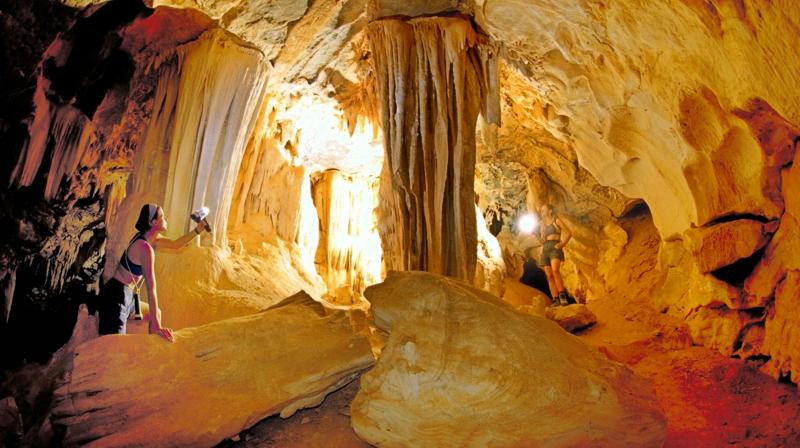A walk in the mountains

Very few people know of Oman as a country gifted with breathtakingly diverse natural landscapes. It is uncharacteristically different from any other country in the Arabian Gulf region. It is also a place that offers a mix of pulsating adventure, outstanding views, picturesque villages and a unique Persian cultural experience.
The Wadi Ghul region — a starkly barren, bare and breathtakingly beautiful mountainous region — is located to the northwest of Al Hamra, about 200 kms away from the capital city of Muscat and takes two hours to travel via Fanjah, Izki and Nizwa, the erstwhile capital of Oman.
As we make our way towards the region, our land cruiser driver takes a sudden detour and enters the craggy and jagged mountains. Imposing landscapes in dark and grey hues start to unfold and dominate the views. And amidst this monochrome landscape, are green dots of thorny acacia, growing almost in defiance on the rugged mountains. As we zig-zag through the dirt roads, I see slender native goats playfully gathering to feast on these patches with great relish and fanfare.
Piercing the silence of the valley, our vehicle roars ahead towards the heart of Oman's hinterland. The vehicle bounces and sways as it negotiates menacing sharp bends and deep gorges. These mountain ranges also offer thrill-seekers the perfect spot to undertake perilous and adrenalin-filled drives, hike or trek through the perilous mountains.
After a stomach girdling three hours' drive up the hills, my bones feel gruffly shaken. I toss out of the vehicle to regain my posture and straighten up. As I look up, I notice with a tinge of triumph for having reached the top of the mountain range, with no other towering mountains above and only valleys down below as far as I can see with gentle wind spinning around me. I reached Oman's own Grand Canyon in the village of Ghul that lies in Jabal Shams region (Mountain of Sun), the highest mountain peak in the Hajar mountain range. The mountain is also known as Grand Canyon of Arabia. The canyon is around a kilometre deep with panoramic views of the majestic mountains and villages below. The rugged appeal and the grey and black hues of the mountains will not only stimulate but will charm your senses. A scene appearing straight from an American West Film set.
Later, I went to the far side of the valley in the Ghul village, a collection of traditional mud-brick homes built into the mountainside. With small plots of agriculture and date plantations, the green stands out against the mountains and lands. There is also an abandoned old Ghul village, where a trailhead for trekking path begins. I rounded off the trip with a visit to Al Hoota caves, believed to be 2 million years old and only show cave in the Arabian Peninsula stretching up to 4.5kms. It has some fascinating stalagmites and stalactite deposits that took millions of years to shape in different dramatic forms. The cave lighting accentuates the visual appeal and the drama around it, for the visitors. Later the same day, I went on the final leg of the itinerary, a traditional village nestled into the side of the mountain, called Misfat Al Abryeen. Here, I walked through the terraced farms and mudbrick buildings to enjoy a real insight into village life. It is one of Oman’s oldest villages. The Omani people here follow a more traditional lifestyle and are warm and welcoming. Villagers of Misfat Al Abriyeen rely on the agricultural terraces for their livelihood. You will see bananas, pomegranates, papayas, mangoes, citrus trees and of course palm trees grown here. The terraces along the mountain slopes are watered through an intricate falaj system that has been carved through the hard rocks of the mountain and is supplied from a spring source. It sets a perfect example of co-existing, integrating and blending with nature. It underlines the fact that you can befriend the nature to your advantage and live and flourish with it no matter how inhospitable the terrain is and create your own little oasis of tranquility and calm.

